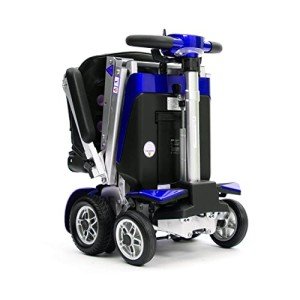Why You Should Focus On Making Improvements To Buying Mobility Scooter
A Comprehensive Guide to Buying a Mobility Scooter
Mobility scooters have ended up being a vital tool for many people wanting to boost their independence and mobility. With a vast range of designs and functions readily available, choosing the best mobility scooter can be intimidating. This article offers a useful guide to help consumers browse their options, examine their needs, and make a notified purchase.
Comprehending Mobility Scooters
Mobility scooters are electric cars created for individuals who experience mobility obstacles. They are particularly beneficial for elders, those with disabilities, or individuals recovering from injuries. Mobility scooters can vary commonly in regards to design, features, and rates.
Types of Mobility Scooters
Before starting a purchase, it's necessary to understand the various types of mobility scooters available:
Three-Wheel Scooters:
- Generally more maneuverable in tight spaces
- Lightweight and portable
- Suitable for indoor use
Four-Wheel Scooters:
- Offer greater stability and balance
- Appropriate for outside use over different terrains
- Normally have a longer battery life
Foldable/Portable Scooters:
- Designed to be easily carried and stored
- Can frequently suit the trunk of a car
- Perfect for those who take a trip often
Heavy-Duty Scooters:
- Built to accommodate bigger people
- Typically included more robust functions for outside use
- Normally geared up with larger batteries for prolonged variety
Elements to Consider When Buying a Mobility Scooter
1. Weight Capacity
Choose a mobility scooter that can support the user's weight. A lot of scooters have a weight limit varying from 250 to 500 pounds. It is essential to make sure that the scooter can accommodate the user easily.
2. Variety and Battery Life
The range is how far the mobility scooter can travel on a single charge. Common varieties vary in between 10 to 30 miles. Consider the user's everyday activities and pick a scooter with an appropriate variety.
3. Scooter Dimensions
Think about the size of the scooter, including its weight and measurements. A more compact scooter might be ideal for narrow corridors and tight spaces, while bigger models offer additional stability and comfort.
4. Surface Capability
Evaluate where the scooter will primarily be utilized. If the user plans to take a trip primarily on pavement, a lightweight model may suffice. However, if the user needs to traverse gravel or unequal surface areas, think about a four-wheel scooter developed for off-road usage.
Leading Features to Look For
Convenience
- Adjustable Seats: Look for scooters with cushioned and height-adjustable seats to ensure convenience throughout travel.
- Armrests: These boost security and support while navigating.
Security and Visibility
- Headlights and Taillights: Essential for nighttime use.
- Turn Signals and Reflectors: Improve exposure and safety while on the roadway.
User-Friendly Controls
- Joystick or Drive Controls: These must be instinctive and simple to manipulate.
- Easy-to-Read Displays: A control board that reveals battery life, speed, and distance can enhance the user experience.
Additional Features
- Storage Compartments: These offer included benefit for carrying personal products while on the go.
- Weather Protection: Consider models with rain covers or windshields if utilized in variable weather condition conditions.
Expense Considerations
When budgeting for a mobility scooter, rates can vary anywhere from ₤ 500 to over ₤ 5,000 depending on the model, functions, and brand name. Additional expenses may consist of:
- Extended Warranty: Protects against problems and can save cash in the long run.
- Devices: Optional functions, such as updated seats, lights, or storage services.
Function
Cost Range
Standard Models
₤ 500 – ₤ 1,500
Mid-Range Models
₤ 1,500 – ₤ 3,000
High-End Models
₤ 3,000 – ₤ 5,000
Financing Options
Numerous merchants offer financing plans, and some city government efforts might supply grants or help for those in requirement. Examine prospective monetary support with community resources or mobility service companies.
Frequently asked questions about Buying a Mobility Scooter
What is the distinction between a mobility scooter and a wheelchair?
Mobility scooters are motorized and permit users to browse separately, while wheelchairs may require physical support or manual operation.
How do I maintain a mobility scooter?
Routine upkeep involves inspecting battery life, cleaning the scooter, and examining tires and brakes. Constantly refer to the user handbook for particular standards.
Can mobility scooters be utilized inside?
Yes, numerous designs are created for both indoor and outside use. However, three-wheel scooters tend to be better suited for indoor navigation due to their tighter turning radius.
Are mobility scooters covered by insurance coverage?
Some insurance coverage prepares cover a part of the costs for mobility scooters if they are considered clinically essential. Contact your company for particular information.
How quickly can a mobility scooter go?
Many mobility scooters have an optimal speed ranging from 4 to 8 miles per hour. However, mymobilityscooters.uk might vary depending upon regional policies.
Getting a mobility scooter can substantially enhance one's independence and lifestyle. By comprehending the types, functions, and costs related to mobility scooters, prospective purchasers can make well-informed decisions that fit their requirements and choices. Personalization and comprehensive research are key to guaranteeing fulfillment with this essential financial investment.
